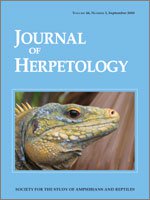The Bokermannohyla martinsi species group includes two species, B. martinsi and B. langei. Bokermannohyla martinsi is found mainly in rocky permanent streams, associated with gallery forests in the highlands of the southernmost portion of the Espinhaço Mountain Range, Brazil. Its tadpoles have robust, oval/ovoid in lateral and dorsal views, black bodies, and a muscular tail. External morphology, color in life and in preservative, and detailed morphometric data are presented, as well as natural history notes for the species. Diagnostic characteristics that help distinguish B. martinsi tadpoles from other species within the B. circumdata, B. pseudopseudis, B. alvarengai, and B. claresignata groups are as follows: labial tooth row formula, absence of a median gap on the anterior row of marginal papillae, and black coloration of the body and tail. Data on microhabitat use available for five species of Bokermannohyla indicate that their tadpoles have broad niches, being able to exploit many types of microhabitats (e.g., substrate type, depth, current, and vegetation presence or absence) throughout the year within the streams where they occur. Regardless of the available microhabitats in the sampling sites, tadpoles showed high niche overlap, rendering their differentiation based on microhabitat use unlikely.
How to translate text using browser tools
1 September 2010
Description of the Tadpole of Bokermannohyla martinsi (Anura: Hylidae), Morphological and Ecological Comparison with Related Bokermannohyla Tadpoles
Felipe S. F. Leite,
Paula C. Eterovick
ACCESS THE FULL ARTICLE

Journal of Herpetology
Vol. 44 • No. 3
September 2010
Vol. 44 • No. 3
September 2010




